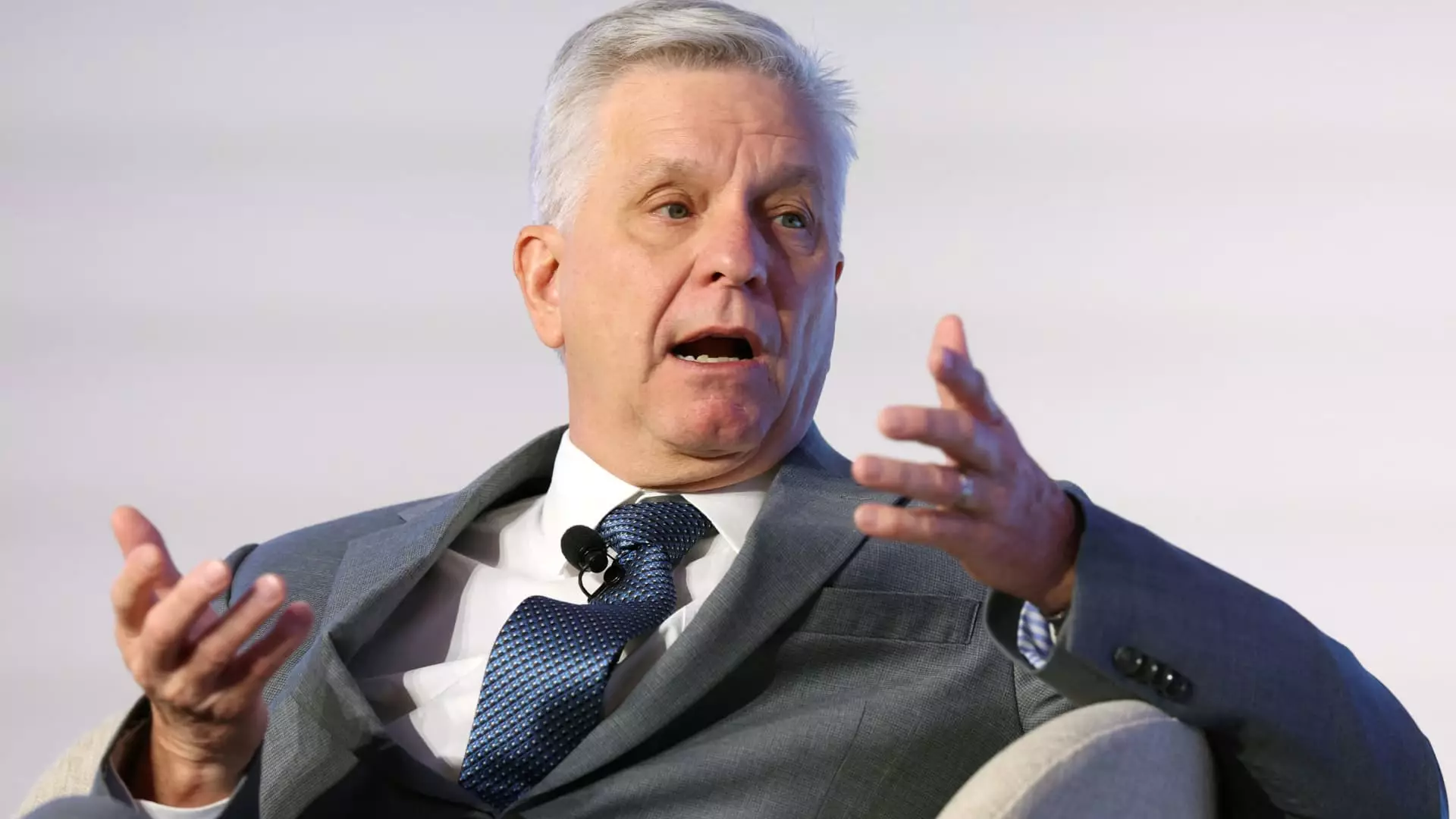The central banking system of the United States, known as the Federal Reserve (Fed), is tasked with maintaining economic stability. Its Governor, Christopher Waller, recently expressed a potentially pivotal viewpoint on the monetary policy landscape in an interview with CNBC. According to Waller, there could be multiple interest rate cuts throughout the year if inflation trends downwards as he anticipates. This perspective, however, is contingent upon respective economic data concerning inflation and unemployment, creating a condition-based approach that highlights the complexity involved in economic forecasting.
Waller’s assertion that the central bank might initiate its first rate cut in the first half of the year may bring optimism to various market participants. The idea that subsequent reductions could follow underlines a proactive stance that contrasts with the more cautious approaches of previous years. It’s worth noting that the featuring of “data-driven” language indicates a responsiveness to fluctuating economic indicators—a nuanced tactic that aims to balance measured caution with aggressive foresight.
Central to Waller’s outlook is the critical role of economic data. His comments reflect an understanding that monetary policy cannot operate in a vacuum. Rather, it’s a dynamic interplay with real-world indicators that dictate the direction of interest rates. As he mentioned, if inflation continues to show improvement and unemployment remains stable, the Fed might indeed explore the option of more significant rate adjustments. Speculating about three to four rate cuts in quarter-point increments, Waller emphasizes how contingent the Fed’s moves are on the economic landscape.
The following data points—consumer price index, core readings, and other metrics—become pivotal in this conversation. Currently, inflation, although showing signs of easing to a core reading of 3.2% in December, remains a primary focus. The sentiment towards inflation easing in 2024 is not universally shared among his colleagues, showcasing that an array of perspectives exists within the FOMC. Therefore, a collaborative yet cautious strategy appears to be guiding the Fed’s future policies.
Waller’s insights have stirred new activity in the marketplace, reflecting heightened expectations for a series of rate cuts. Following his statements, traders appear to have slightly increased their projections for rate reductions, notably for a possible move in May, while June remains a favored timeframe. The fluctuating nature of these predictions underscores the market’s keen sensitivity to the Fed’s leading signals.
An implication of Waller’s stance suggests that market players are encouraged to interpret the Fed’s flexibility as leverage—an opportunity to recalibrate investment strategies based on anticipated monetary shifts. This can create volatility as traders adjust their outlooks, often resulting in rapid changes in stock and bond prices. The recent data indicating a rise in expectations for a second cut by the year’s end further underscores how sentiments surrounding fiscal policy can quickly shift in response to new revelations and forecasts.
Waller’s optimism about inflation trending down is contingent on various economic factors. His assertion that he may be more hopeful about the inflation trajectory than some of his peers highlights the diverse views within the board. Notably, he cited a belief that persistent inflation indicators seen throughout 2024 would start to diminish—an assertion that remains to be validated through ensuing economic performance.
The core consumer price index, while declining, is still above the Fed’s target of 2%, causing a complex backdrop against which the central bank must operate. Even with Waller’s confident projections, the reality remains that economic data may serve up unexpected challenges, keeping the Fed’s path to potential rate cuts uncertain.
As the next Federal Open Market Committee (FOMC) meeting approaches, Waller’s guidance remains that the Fed should proceed with caution. While the financial markets are eager for action, the central bank’s leadership is careful not to rush into decisions that could exacerbate existing issues. A temperate approach remains the underlying philosophy, maintaining that January’s market conditions will require careful assessment before enacting any changes.
The evolving discourse surrounding interest rates reflects a balancing act between optimism and prudence. With data as the fulcrum for decision-making, the Fed is poised to navigate an uncertain economic landscape with adaptability, understanding that the consequences of their actions will ripple through both the domestic and global economies. As we move deeper into the year, all eyes will remain fixed on the Fed’s movement, able to pivot as necessary in response to the unfolding economic narrative.

